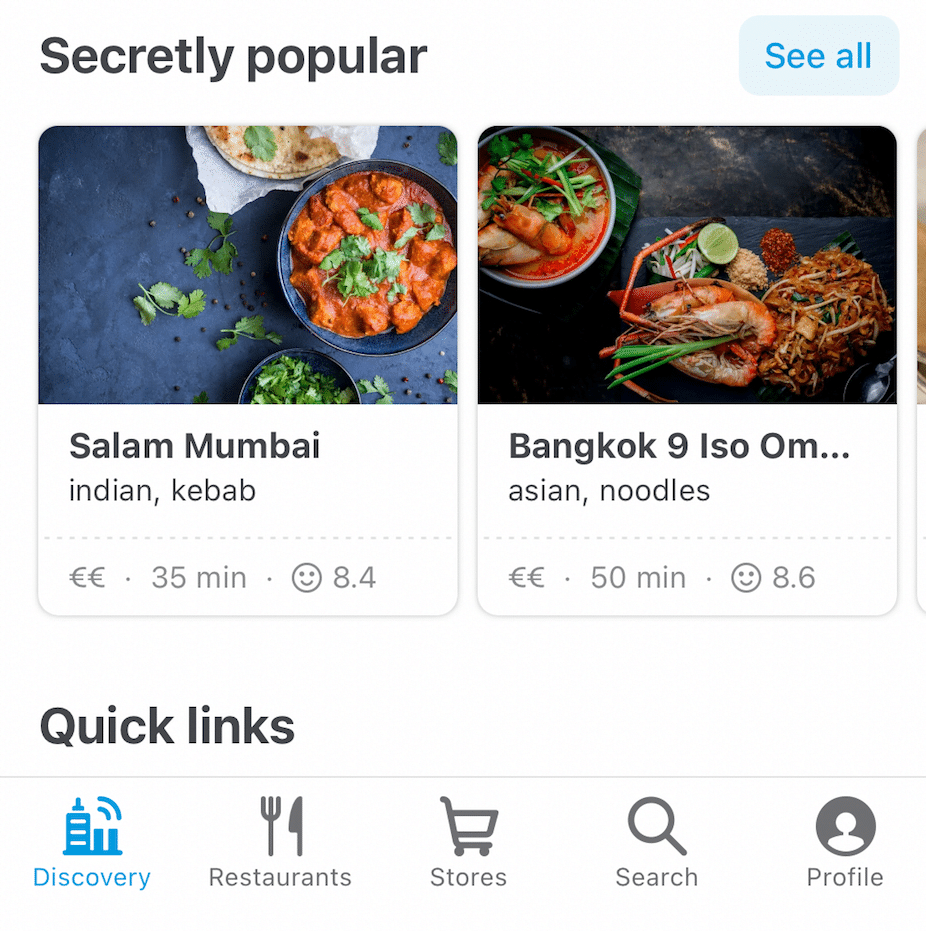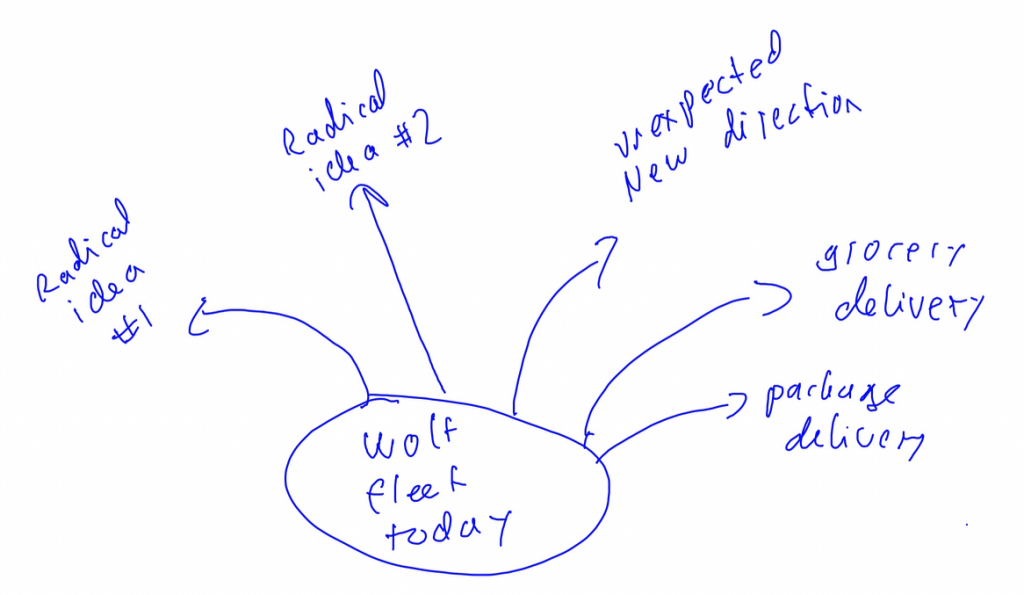Companies are not born as successful platforms. Instead, they start from something trivial. They then build their success over time. Their platform strategy evolves.
Other companies try to learn from the successful platforms. However, they focus too much on how the successful operate today.
As a consequence, they try to copy everything they are doing today. Thus, they to push too much too fast. Their platform strategy fails to pace their actions effectively.
Sequence matters: pace your actions over time in your platform strategy
To succeed, one should understand the recipe successful companies followed to blossom. Hence, we have researched platform strategies for the past five years. We have published in-depth reports on Facebook, Uber, Amazon, and many others.
We have identified a stepwise formula of successful platform companies. The recipe shows how you need to add ingredients in a sequence over time. Not simultaneously. Sequencing enables you to grow from a draft idea to global success.

In this blog, we describe how Wolt applied a recipe of four key integredients. The description builds on a presentation by Toni Kaario. He is a product lead at Wolt and Timo’s former student. Toni gave his presentation in a platform business model Webinar. It was hosted by Tero and August Associates.
Wolt is a Finland-based platform currently focused on food deliveries. It raised $530M in January 2020. It has continued growing with amazing speed during the pandemic. Wolt started as a food courier. Recently, it has expanded into other categories as well.
Ingredient 1: Ignite a chain-reaction of network effects with a focused approach
You need to start small to become significant. If you want to achieve global greatness, you must first create something that excites people. Hence, your platform strategy should start with focus.
Wolt’s leaders understood the need to excite people. Thus, they first focused on people who would get most excited about the service. Therefore, they made sure that they have the trendiest, coolest restaurants in town.
In this way, they get engagement. Consequently, people start telling their friends about the service. This generates more interest.

As there is more interest, it’s easier for Wolt to involve more restaurants. This makes the service attractive for more people. And, as more people join, more restaurants still want to join. Many restaurants, again, make Wolt attractive for a larger number of customers ordering food.
The virtuous cycle of growth is based on network effects: the value of a platform increases for each user as more users join the platform. In Wolt’s case, we speak about indirect network effects. The effect is indirect as the number of restaurants adds value to customers and vice versa.
Even today, Wolt is applying this approach every time it enters a new city. As Wolt’s customers are excited about the restaurants, they are likely to get excited about Wolt. And this is how Wolt is able to ignite the chain reaction of network effects.
Ingredient 2: Improve your actions continuously with data-driven learning
Focus and a good value proposition are a great starting point. However, they do not guarantee success. Instead, success comes to those who also deliver what they have promised. And deliver it better every time.
In the platform business, the best way to improve your capabilities is to learn fast. You collect data on your actions and their outcomes. Then you see which actions lead to the best outcomes and reinforce them. When you do this with AI, it’s fast and effective. It makes you unstoppable. Data-driven learning should therefore be a cornerstone of your platform strategy.
Wolt recognized early on that delivery optimization is an essential part of their business. People who order food want it fast and reliably. But, each delivery generates costs. And Wolt needs to reduce the overall cost. Wolt, therefore, wanted to find an effective way to reach both goals: fast deliveries and cost optimization.

The importance of delivery optimization makes the algorithm for optimizing courier routes a key asset for Wolt. They, therefore, invested substantially on developing one. They hired data-scientists and logistics engineers to do this.
Wolt is also actively developing the algorithm. For example, they added a feature that allows restaurants to tell if they prepared the meal early. This feature enables a courier to pick up the meal sooner. It makes deliviers faster.
Ingredient 3: Make others’ services better by getting inside them
Most people think of Wolt and many companies as app-centric. They have their app. If you want to use their services, you need to use the app. However, companies can also embed their services in other companies’ sites. This is an essential element of platform strategy.
Wolt is currently experimenting such collaboration with Kesko. It is the largest retail chain in Finland. People can buy their groceries in Kesko online store in the usual way. But, they don’t use the standard delivery option. Instead, they choose a Wolt delivery at check out.

Wolt delivers the groceries faster than Kesko would. Hence, the Wolt delivery adds value for Kesko’s customer. This benefits also Kesko. Besides, deliveries are not Kesko’s core competence.
APIs enable such embedded services. They stand for application program interfaces. They enable computer programs to communicate with one another. Thus, another company can use your services without human involvement. APIs define the proper paraments. Then, operations and payments start rolling.
Ingredient 4: Transcend industry boundaries by leveraging your unique assets
Tight focus is essential for building engagement. However, it’s only a step in the recipe. Successful platforms radically expand their offering after building engagement. They identify how they can leverage their capabilities in other industries. They transcend industry boundaries in unexpected ways. In this way, they multiply the value generated by their capabilities.
Wolt no longer defines itself as a meal courier. Instead, Wolt is a company managing courier fleets in hundreds of cities. Besides delivering warm meals, these fleets can do various other activities. Delivering groceries and small packages are seemingly natural next steps.

However, only imagination is the limit of what other activities such a fleet could perform. A successful platform strategy recognizes such opportunities. It therefore multiplies company value over time.
Creating the unexpected requires human creativity. It’s about breaking mental categories. You used to define your business as something. You have been using analytics to make you best in that something.
Now it’s time to recognize that you could something else. This requires you to step back and rethink what you are doing. You need to overcome mental barriers.
Platform strategy sets the sequence and pace actions
Don’t try to copy the best platform companies today. They have worked tirelessly for several years to achieve their greatness. The time they have spent on preparing each ingredient has been critical. The order of the ingredients matters because their effects cumulate.
So, include time and pace in your platform strategy. Focus on the sequence:
- Ignite a chain-reaction of network effects with a focused approach
- Improve your actions continuously with data-driven learning
- Make others’ services better by getting inside them
- Transcend industry boundaries by leveraging your unique assets

2 Responses
Very nice, well-organized, and insightful material. Thanks. Waiting for more similar blog posts.
thanks. Do you have some favorite companies you would like us to look at?